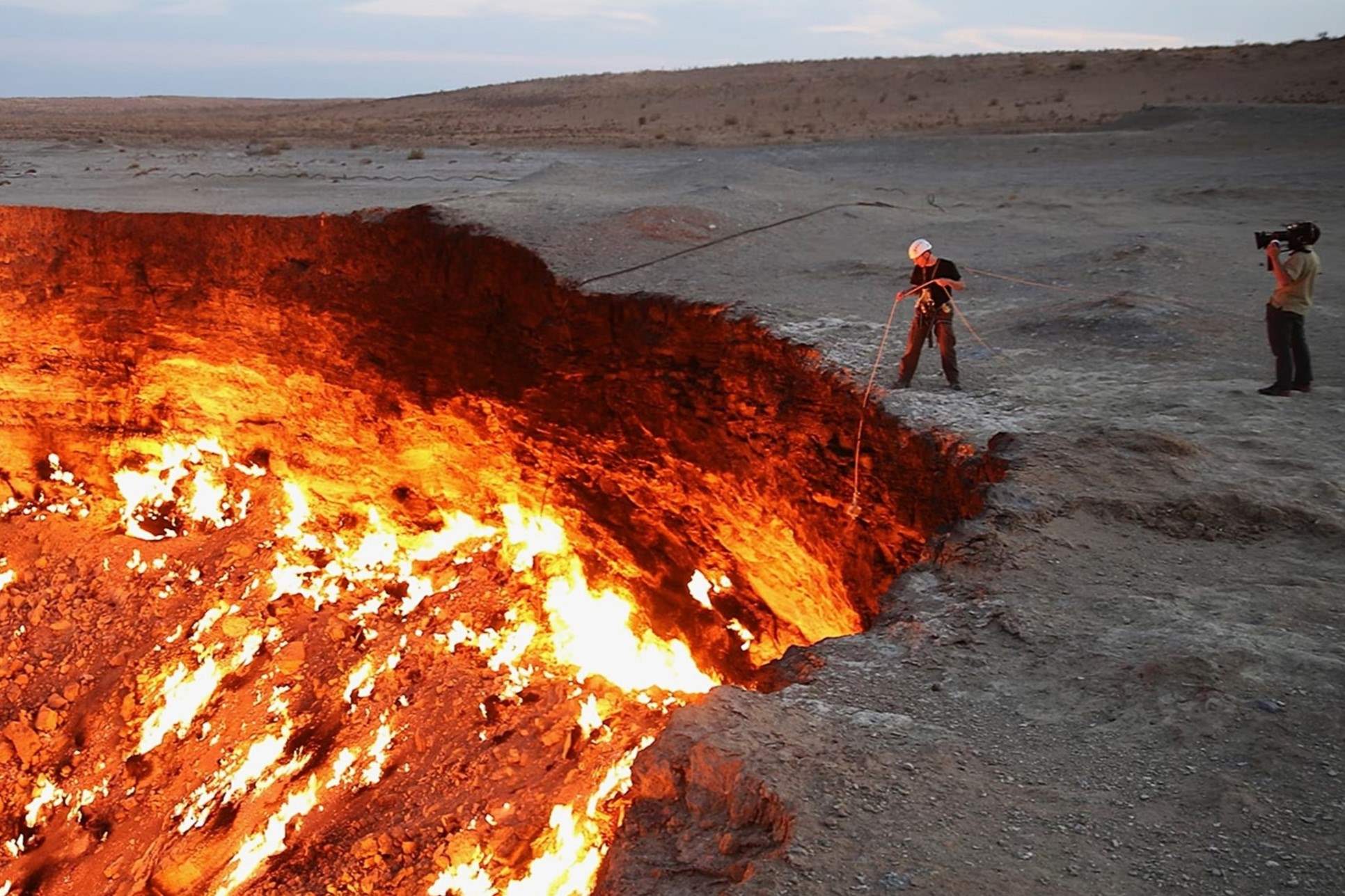Mystery Of The Turkmenistan Fire Crater

Have you ever heard of the Turkmenistan Fire Crater? This blazing pit, also known as the Door to Hell, has been burning for decades. Located in the Karakum Desert, it draws curious travelers from around the globe. The crater's fiery glow can be seen from miles away, creating an eerie yet mesmerizing sight. But how did this inferno start, and why does it keep burning? Many stories surround its origin, adding to the mystery. Whether you're a thrill-seeker or just love unique destinations, the Turkmenistan Fire Crater offers an unforgettable experience. Ready to learn more about this natural wonder? Let's dive in!
The Enigmatic Turkmenistan Fire Crater
The Turkmenistan Fire Crater, also known as the Darvaza Gas Crater or "Door to Hell," has fascinated travelers and scientists alike. This fiery pit, located in the Karakum Desert, has been burning for decades, creating an otherworldly spectacle. Let's explore the mystery behind this blazing wonder.
How Did the Fire Crater Form?
Understanding the origins of the Darvaza Gas Crater involves a mix of natural phenomena and human intervention. Here's a look at the events that led to its creation:
Soviet Drilling Operation: In 1971, Soviet geologists were drilling for natural gas in the Karakum Desert. During the operation, they accidentally tapped into a cavern filled with gas, causing the ground to collapse and form a crater.
Gas Ignition: To prevent the spread of methane gas, the geologists decided to ignite it, expecting the fire to burn out in a few weeks. However, the gas has continued to burn for over 50 years, creating the perpetual flame seen today.
What Makes the Fire Crater Unique?
Several factors contribute to the uniqueness of the Turkmenistan Fire Crater, making it a must-see destination for adventurers and scientists.
Constant Flame: Unlike other natural gas flares, the Darvaza Crater has been burning continuously for decades, providing a rare and mesmerizing sight.
Remote Location: Situated in the vast Karakum Desert, the crater's isolation adds to its mystique. The journey to reach it involves traversing rugged terrain, enhancing the sense of adventure.
Scientific Interest: The crater offers a unique opportunity for scientists to study the effects of long-term gas combustion and its impact on the environment.
Visiting the Turkmenistan Fire Crater
For those brave enough to venture into the Karakum Desert, visiting the Darvaza Gas Crater can be an unforgettable experience. Here are some tips for making the most of your trip:
Best Time to Visit: The cooler months from October to April are ideal for visiting, as the desert heat can be extreme during summer.
Travel Arrangements: Due to its remote location, hiring a local guide or joining a tour group is recommended. They can provide transportation and ensure a safe journey.
Camping Near the Crater: Many visitors choose to camp near the crater to experience its eerie glow at night. Bring camping gear, food, and plenty of water.
The Impact of the Fire Crater on Turkmenistan
The Darvaza Gas Crater has had a significant impact on Turkmenistan, both culturally and economically. Here's how:
Tourism Boost: The crater has become a major tourist attraction, drawing visitors from around the world and boosting the local economy.
Cultural Symbol: The "Door to Hell" has become a symbol of Turkmenistan's natural wonders, featuring prominently in the country's tourism campaigns.
Environmental Concerns: The continuous burning of natural gas raises environmental concerns, prompting discussions about potential solutions to mitigate its impact.
Future of the Turkmenistan Fire Crater
The future of the Darvaza Gas Crater remains uncertain. While it continues to burn, there are ongoing debates about whether to extinguish the flame or let it burn out naturally. Here are some considerations:
Environmental Impact: Extinguishing the flame could reduce methane emissions, benefiting the environment. However, the technical challenges and costs involved are significant.
Tourism Revenue: The crater's status as a tourist attraction provides economic benefits that could be lost if the flame is extinguished.
Scientific Research: Ongoing research at the site could provide valuable insights into natural gas combustion and its long-term effects.
The Turkmenistan Fire Crater remains a captivating enigma, drawing curious minds and adventurous spirits to witness its eternal flame.
The Enduring Allure of the Turkmenistan Fire Crater
The Turkmenistan Fire Crater continues to fascinate visitors with its fiery glow and mysterious origins. Known as the Door to Hell, this natural gas crater has been burning for decades, drawing curious travelers from around the world. Its creation, a mix of human error and natural phenomena, adds to its intrigue. Standing at the edge of the crater, feeling the heat and hearing the roar of the flames, is an unforgettable experience.
Visiting this unique site offers a glimpse into the power of nature and the unexpected consequences of human actions. Whether you're an adventurer or simply curious, the Turkmenistan Fire Crater is a must-see. Its enduring allure lies in its mystery, making it a captivating destination for anyone looking to explore the wonders of our planet.

